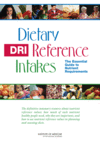The Human Genome Project, completed in 2003, identified the genes that make up human DNA. Major advances in genomic technologies in the early 21st century have helped to increase dramatically the number of genes identified as playing a role in a variety of common disorders. Genetic or genomic testing can be used to guide medical decision-making and treatment, ranging from personalized drug therapy to assessing an individual’s risk of developing common chronic diseases.
New reports from the Institute of Medicine discuss various possibilities for the future and potential issues that could arise from our ever-expanding knowledge of our genetic makeup. The Value of Genetic and Genomic Technologies: Workshop Summary explores the concept of value in regards to genomics and genetics and how that concept affects the ways decisions are made about using tests and technologies. This book brings together diverse perspectives on the value of genetic testing and discusses its use in clinical practice.
Advances in our understanding of genomics, combined with significant reductions in the cost of genetic tests, have spawned new business models in which companies market genetic tests and personalized genetic profiles directly to consumers. For example, it is now possible to purchase a home DNA paternity test at many pharmacies in the United States. Special DNA test kits allow anyone to trace their ancestry. Direct-to-Consumer Genetic Testing: Summary of a Workshop discusses the scientific and ethical foundations for commercial genetic testing, personal and social issues, research and medical issues, and the impact on health care and public health.
These books and others from the Institute of Medicine explore the possibilities and directions for the future for both researchers and private industry.
 |
The Value of Genetic and Genomic Technologies: Workshop Summary Knowing one’s genetic disposition to a variety of diseases, including common chronic diseases, can benefit both the individual and society at large. The IOM’s Roundtable on Translating Genomic-Based Research for Health held a workshop on March 22, 2010, to…
|
 |
Direct-to-Consumer Genetic Testing: Summary of a Workshop Today, scores of companies, primarily in the United States and Europe, are offering whole genome scanning services directly to the public. The proliferation of these companies and the services they offer demonstrate a public appetite for this information and…
|
 |
Despite the many basic research discoveries in genetics, relatively few gene-based treatments, drugs, or preventative measures have been developed. One way to bridge this gap may be for industry, academia, and government to develop partnerships that share…
|
 |
With the advent of genome-wide association studies, numerous associations between specific gene loci and complex diseases have been identified–for breast cancer, coronary artery disease, and asthma, for example. This rapidly advancing field of genomics has…
|
 |
Innovations in Service Delivery in the Age of Genomics: Workshop Summary New discoveries in genomics–that is, the study of the entire human genome–are changing how we diagnose and treat diseases. As the trend shifts from genetic testing largely being undertaken for rare genetic disorders to, increasingly, individuals being…
|
 |
Diffusion and Use of Genomic Innovations in Health and Medicine: Workshop Summary Until fairly recently, genetic information was used primarily in the diagnosis of relatively rare genetic diseases, such as cystic fibrosis and Huntington’s Disease, but a transformation in the use of genetic and genomic information is underway. While…
|


























































